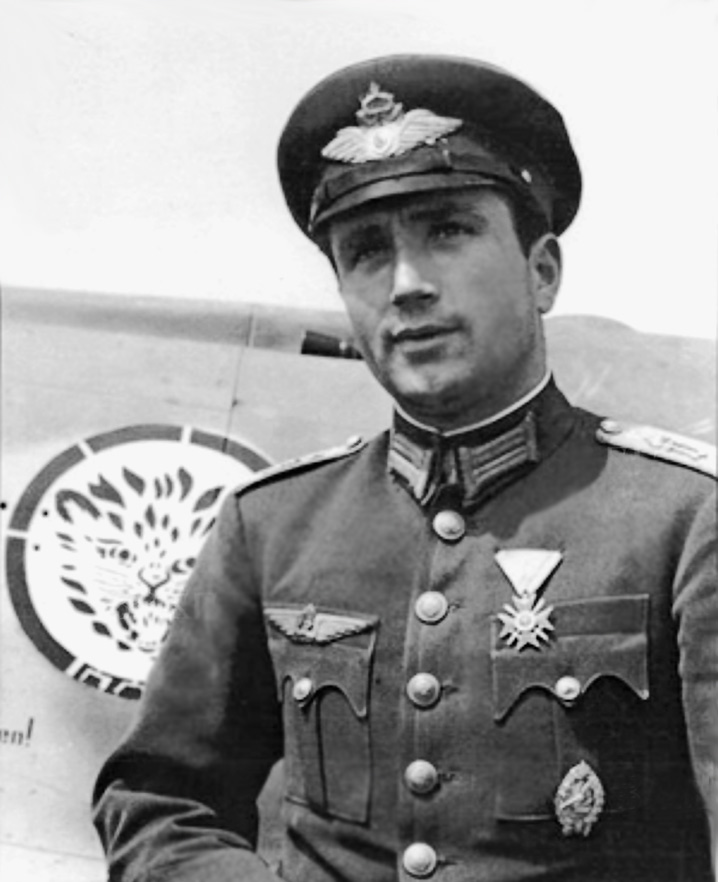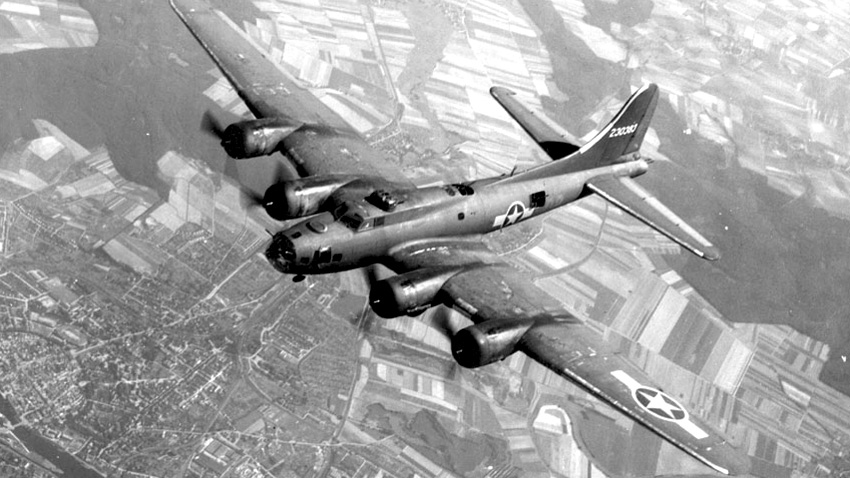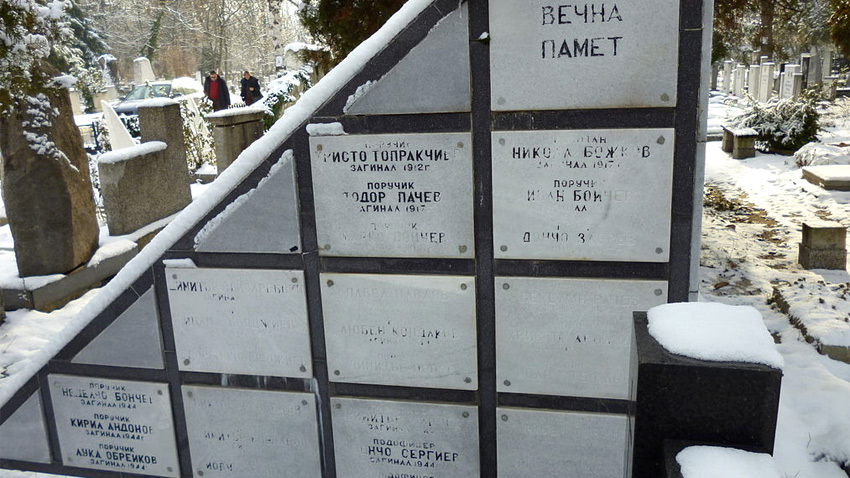 Nowadays one can hardly find a Bulgarian, who remains unaware of the feat of Captain Dimitar Spisarevski and his heroic death while protecting the skies above Sofia during WWII. However, few know the story of the other ‘living torpedo’ – First Lieutenant Nedelcho Bonchev, the military pilot who repeated /though unintentionally/ the heroism of Spisarevski on 17 April 1944 – and found his death under vague circumstances only six months later. Today we mark the 100th birth anniversary of the ace.
Nowadays one can hardly find a Bulgarian, who remains unaware of the feat of Captain Dimitar Spisarevski and his heroic death while protecting the skies above Sofia during WWII. However, few know the story of the other ‘living torpedo’ – First Lieutenant Nedelcho Bonchev, the military pilot who repeated /though unintentionally/ the heroism of Spisarevski on 17 April 1944 – and found his death under vague circumstances only six months later. Today we mark the 100th birth anniversary of the ace.
Nedelcho Bonchev was born on 21 June 1917 in Sofia. He graduated from the Second Men’s High School alongside Dimitar Spisarevski and then joined His Majesty’s Military Academy. The young man studied in Germany and Italy as well. Upon graduating from the Jet Fighter School in Karlovo he kicked off his career as a fighter pilot in the position wing commander in the 642nd flock where fate once again brought him together with Spisarevski. Bonchev quickly grew in his career development to a flock commander and after the forming of the 2/6 jet fighter convey due to the start of the Anglo-American air raids on 1 August 1943 he participated in all air battles for the defense of the capital city of Sofia. On 17 April 1944, a few months after the heroic death of Dimitar Spisarevski, First Lieutenant Nedelcho Bonchev decided to raid one of the Boeing B-17 Flying Fortresses by attacking its fuselage from below. In his own words, he got too close and the peak of the attack was ruined by a blocked cannon – only the machine guns worked. One way or another, most likely unintentionally, Bonchev’s plane rammed the B-17 and they both crashed. The first lieutenant came to himself a few moments later, realizing that he was freely falling to the ground. Instinctively he pulled the catapult lever, but nothing happened – it turned out that his body was still tied up to the pilot’s seat. Somehow Bonchev managed to free himself from the belts and opened his parachute. He landed into deep driven snow, somewhere around the village of Studena, Pernik region, but without his boots, lost in the struggle with the seat. A local saved him from freezing, but due to his stay in the snow he spent the next few months in a hospital with pneumonia, banned from flying. In the end of the summer he couldn’t put up with it anymore and escaped from the hospital, returning to his squadron. The latter was now under the command of the new authority after the communist coup d’etat on 9 September 1944 – Bulgaria no longer played with the Axis.
 By the fatal 8 October 1944 Bonchev had had a total of 8 flights. In the end of the tragic day commanding officer of the flying squadron Colonel Gergov would swear and curse along the track, blaming himself for letting Bonchev fly…
By the fatal 8 October 1944 Bonchev had had a total of 8 flights. In the end of the tragic day commanding officer of the flying squadron Colonel Gergov would swear and curse along the track, blaming himself for letting Bonchev fly…
First Lieutenant Bonchev had to lead two fingertips of Messerschmitt Bf109s, covering six Dornier Do 17 light bombers at first and then he was assigned for two attacks on his own along the Kriva Palanka – Kumanovo road. However, the German battery under attack managed to gun down Bonchev’s plane at Stracin. A fellow pilot spotted Nedelcho jumping with a parachute from the burning plane over some little forest. Unfortunately he also saw several German motorcycles with sidecars headed to the spot. Trying to cover his leader from the air, the other pilot realized that he was doomed due to an insane circumstance – an order of the communist ‘soldiers’ committees’: only a month earlier all the pistols of the pilots had been confiscated. So, practically Bonchev remained unarmed and was nabbed without any chance for resistance. Who knows, if he’d had his pistol with him, maybe the day would have ended differently…
 After this incident, the pilots received their ordnance weapons back, but it was too late for one of them.
After this incident, the pilots received their ordnance weapons back, but it was too late for one of them.
What happened later on with the hero pilot remains vague. One version claims that he was executed during a convoy somewhere along the roads of West Austria or South Germany, because of his attempt to defend his dignity in a quarrel with the guards. However, this country’s history archives will keep the memory of a man of honor and dignity who fulfilled his duty as a soldier till the very end.
Written and translated by: Zhivko Stanchev
Photos: Wikipedia & Archive
In 1018, after half a century of struggle, the First Bulgarian Empire was conquered by Byzantium. Despite the many uprisings of the Bulgarians, the power of Constantinople lasted for nearly two centuries. In the autumn of 1185 or the..
On 19 October, Bulgarians commemorate St Ivan Rilski, also known as St John of Rila, who is considered the country’s heavenly protector. He founded the Rila Monastery, which is the largest and most influential spiritual centre in Bulgaria. Ivan..
Father Genadiy Martinov is a Bessarabian Bulgarian, born in the village of Devetliy, Odessa province (Ukraine). Two centuries ago, his family lived in Eastern Thrace, near Edirne, but after the end of the Russo-Turkish War (1828–1829), during a period..
A 5,000-year-long history lies hidden in the ruins of the medieval fortress “Ryahovets” near the town of Gorna Oryahovitsa where active excavations..

+359 2 9336 661
